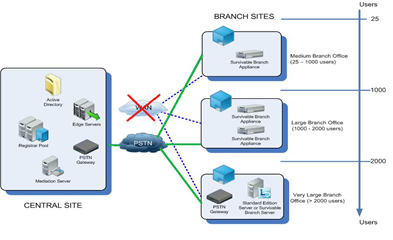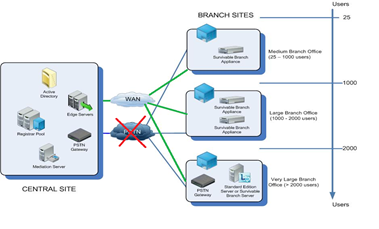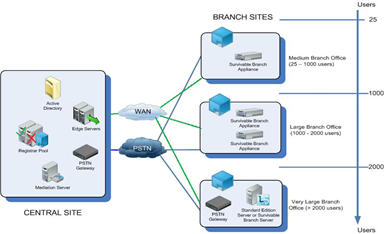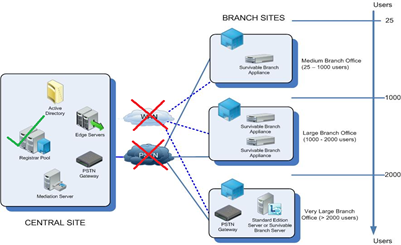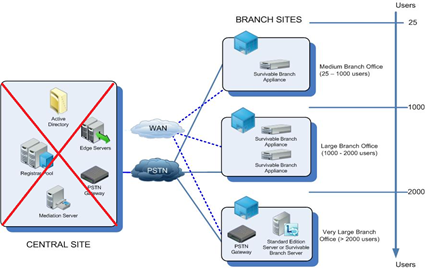Lync 2010 – Response Group Disaster Scenarios
I would like to discuss various disaster scenarios associated with Lync response group topology. I am taking an existing topology as reference . Main focus is on branch site impact during failures .
Lync 2010 enterprise pool is hosted in central site. Response group is associated with central site Three branch sites are associated with central site. Branch sites have WAN and PSTN connectivity from towards Central site. Response group services are hosted in Central site.
Scenario -1 - Wan connectivity goes down between central and branch site: [Figure-1]
Response group is associated with central site . However branch site users wouldn’t be able to connect response group via PSTN link . But PSTN inbound and outbound calls and other enterprise voice features from branch site survives .https://technet.microsoft.com/en-us/library/gg398347.aspx
Figure-1
Scenario -2 – PSTN connectivity goes down between Central and branch site: [Figure-2]
Branch site users should be able to connect response group via WAN link . Response group is hosted in central site and no impact for end users .
Figure-2
Scenario -3 – One Front end server goes down in Central site: [Figure-3]
Response group will be automatically failover to the second frontend box . Branch site users would be able to connect via WAN and no impact for end users.
Figure-3
Scenario -4 – Both PSTN and WAN goes down between Central and branch site: [Figure-4]
Branch site users would be impacted . They wouldn’t be able to connect to response group server which is hosted in central site . However , Central site users would be able to access response group normally.
Figure-4
Scenario -5 – Central site goes down:[Figure-5]
All users including branch site and central site would be impacted as response group is down .
Figure-5
Summary:
By deploying multiple frond end servers, we can overcome single point of failure for response group service.
By implementing Lync Metropolitan Area Resiliency, we can achieve site level resiliency for response group .
